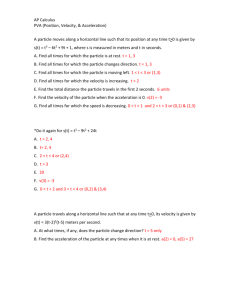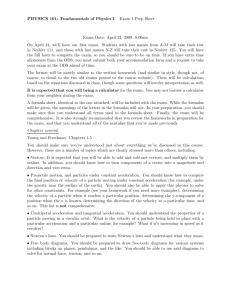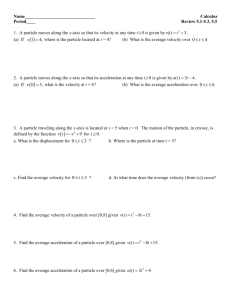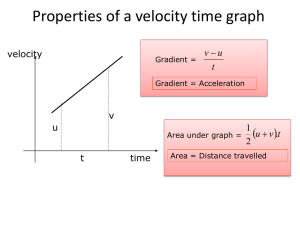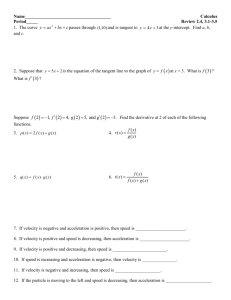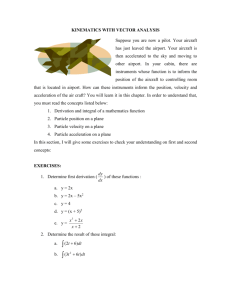DEFINITION: If s(t) is the position function of a particle moving on a
advertisement
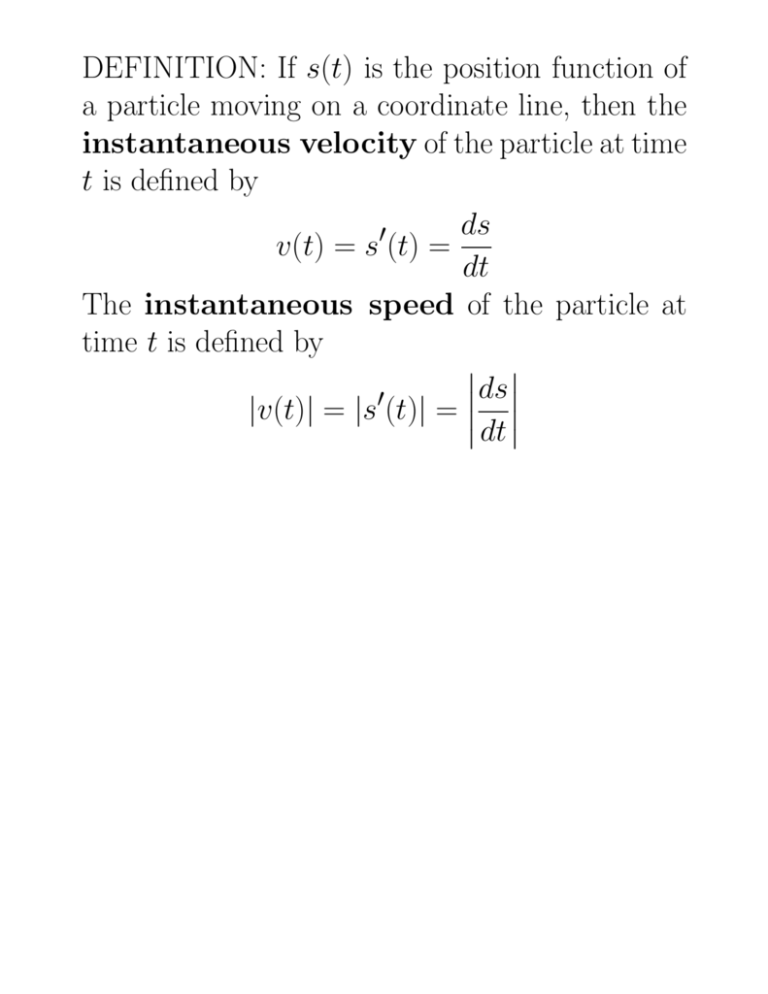
DEFINITION: If s(t) is the position function of a particle moving on a coordinate line, then the instantaneous velocity of the particle at time t is defined by ds 0 v(t) = s (t) = dt The instantaneous speed of the particle at time t is defined by ds 0 |v(t)| = |s (t)| = dt EXAMPLE: Let s(t) = t3 − 6t2 be the position function of a particle moving along an s-axis, where s is in meters and t is in seconds. Find the instantaneous velocity and speed, and show the graphs of position, velocity, and speed versus time. DEFINITION: If s(t) is the position function of a particle moving on a coordinate line, then the instantaneous acceleration of the particle at time t is defined by dv 0 a(t) = v (t) = dt or alternatively, since v(t) = s0(t), 2s d a(t) = s00(t) = 2 dt EXAMPLE: Let s(t) = t3 − 6t2 be the position function of a particle moving along an s-axis, where s is in meters and t is in seconds. Find the instantaneous acceleration a(t), and show the graph of acceleration versus time. INTERPRETING THE SIGN OF ACCELERATION: A particle in rectilinear motion is speeding up when its velocity and acceleration have the same sign and slowing down when they have opposite signs. EXAMPLE: Suppose that the position function of a particle moving on a coordinate line is given by s(t) = 2t3 −21t2 +60t+3. Analyze the motion of the particle for t ≥ 0. THE FREE-FALL MODEL. Suppose that at time t = 0 an object at a hight of s0 above the Earth’s surface is imparted an upward or downward velocity of v0 and thereafter moves vertically subject only to the force of the Earth’s gravity. If the positive direction of the s-axis is up, and if the origin is at the surface of the Earth, then at any time t the height s = s(t) of the object is given by the formula 1 2 (∗) s = s0 + v0t − gt 2 where g ≈ 9.8 m/s2 ≈ 32 ft/s2 is a constant, called the acceleration due to gravity. REMARK: From (∗) it follows that dv ds = v0 − gt, a= = −g v= dt dt EXAMPLE: Nolan Ryan, one of the fastest baseball pitchers of all time, was capable of throwing a baseball 150 ft/s (over 102 mi/h). During his career, he had the opportunity to pitch in the Houston Astrodome, home to the Houston Astros Baseball Team from 1965 to 1999. The Astrodome was an indoor stadium with a ceiling 208 ft high. Could Nolan Ryan have hit the ceiling of the Astrodome if he were capable of giving a baseball an upward velocity of 100 ft/s from a height of 7 ft?


